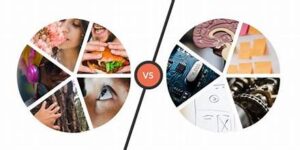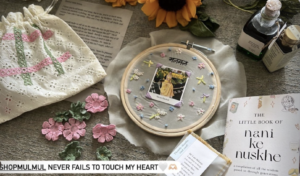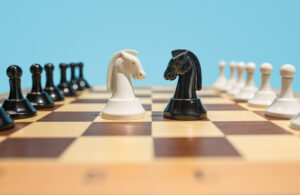Do you think brand experiences are the key to cultivating brand loyalty in an era where customers are constantly bombarded with advertising messages?
The answer is YES, and here’s how!
While brands and businesses still use traditional marketing methods for reaching out to their audiences, there is something better that makes your brand stand out from the rest for your audience — Experiential Marketing.

Don’t believe us? Here are some numbers that will put everything into perspective:
- 74% of consumers have confessed that interacting with branded event marketing experiences significantly boosts their inclination to purchase the promoted products.
- After participating in events and experiences, 91% of consumers report experiencing more positive feelings towards the brands involved.
- A remarkable 65% of customers reveal that product demos and live events are the most effective advertising methods for helping them comprehend the product better than any other approach.
Today we will explore how experiential marketing makes a difference and how you can include it in your marketing plan.
How Does Experiential Marketing Make a Difference?
Experiential Marketing is all about leaving the realm of the mundane behind and immersing your audience in a whirlwind of excitement. Put simply, it’s about creating an experience for your customers rather than contacting them via traditional marketing methods.
It’s an experience that turns passive audiences into active participants, especially at a time when:
- Your customers expect a two-way interaction.
- Just talking to your customers is not enough.
But wait, there’s more to experiential marketing that makes a difference.
1. Appeals Directly To Hearts
Experiential marketing is interactive, engaging all 5 senses—more than 1 at times. While traditional marketing may engage only vision and hearing, experiential marketing makes it possible to engage the senses of smell, taste, and touch.
Since the senses play an essential role in emotional processing and learning, by engaging more than one sense, experiential marketing makes it easier to tap into someone’s emotional state. This way, it appeals directly to the hearts of the audience.

For instance, a growing Indian apparel brand, Mulmul, held a beautiful pre-launch event called “Nani House” to launch their Nani House collection. The pre-launch event features traditional singers, food items like ice golas and pani puris in mud, and photos of attendees with their loved ones. Thus evoking a sense of nostalgia—the emotions they felt when they visited their nani’s house by engaging different senses.
Furthermore, they sent out gift packages that included:
- Flowers
- Embroidery hoops with a picture and brand name
- A sweet letter
- Hair product from Kama Ayurveda
- Brochure kind of book with ‘Nani ke Nuske,’ and more in a Mulmul bag.
They engaged all the senses and struck an emotional connection, relating everything to their latest collection.

2. Enhances Brand Storytelling & Relationships
It’s one thing for a brand to communicate their story via emails, social media posts, and banners. It’s another thing to let your consumers learn and experience it firsthand.
Since experiential marketing involves active participation from both the brand and the audience, it opens doors to interaction. And interaction allows your audience to understand the little details of your story—where you come from, why you do what you do, and what you have to offer. This also gives your audience a once-in-a-lifetime experience that may deepen your relationship, turning them into brand champions!
This is precisely what Deepika Padukone did for the launch of Bakuchiol Slip Illuminating Face Oil, a product from her skincare brand, 82°E. Padukone collaborated with Meta, invited many influencers, and curated an immersive experience different from their usual hustle-bustle. By pairing up the product launch with activities like sound therapy, personalized notes for everyone, and live sessions, the team not only created a once-in-a-lifetime experience for all the skincare enthusiasts present there but also gave themselves a chance to tell their story.
3. Boosts Overall Brand Awareness
The best experiential marketing events are those that are long remembered. So how do you ensure that happens? By offering value.
When consumers receive takeaways (experiences or goodies), they remember you differently because you gave them something desirable and thus valuable. This satisfaction results in sharing these experiences further with everyone, which helps you improve your brand awareness.
Moreover, the best thing about experiential marketing is that it focuses on creating an experience that may not be limited only to your ideal target audience. Because of the experience you’ve created, everyone who participates in it—even a bystander who stopped by to see what was going on—is more likely to know and remember your brand. This helps you create awareness, which translates to sales over time in the most organic manner.
Need proof? Read these statistics:
- Experiential marketing, involving brand events, drives sales for 79% of marketers.
- When used as a marketing strategy, experiential marketing leads to increased sales for 65% of brand owners.
How Can You Leverage Experiential Marketing For Your Brand?
We at StartInc recently leveraged experiential marketing for Love Kaapi.
Love Kaapi is an artisanal, homegrown coffee brand from the hills of Chikmagalur. As a newly launched brand in the competitive coffee landscape, we wanted to do something that gave us a chance to interact with the audience in person. So here’s what we did.
We curated a special Kaapi brewing experience at 3 WeWork locations. Our goal was to bring the estate of Chikmagalur and the authenticity of coffee to life in a corporate workplace, where coffee flows freely but not much is known about its origin or brewing. We played on the visual and olfactory (smell) senses to simulate a complete brewing experience, right from bringing peaberries, beans, branches, and powder to brewing some fresh coffee using multiple home brewer equipment to bust the myths around filter coffee. By the time we wrapped up the event, there was only one aroma in the air: Love Kaapi’s Coffee.
Just like we used product sampling to help the brand engage with its audience, you could too. And if you need some more ideas, you could always:
- Invest in creating an atmosphere that resonates with the brand values using aesthetics at pop-up shops
- Arrange for product demos (just like Apple did for its newly launched VR headsets)
- Create a tour and tasting session (like the Sula Vineyards winery tour and wine-tasting session)
- Hold classes and workshops
It’s a Wrap (Only For Now!)
Maya Angelou once said, “People will forget what you said, people will forget what you did, but people will never forget how you made them feel.” And the same goes for brands and businesses.
Experiential marketing is a powerful tool that, when used strategically, can do wonders for your brand—increase awareness, improve engagement, and deepen audience relations. All of which will eventually lead to sales and brand growth.
If you, too, want to explore the power of experiential marketing, we are here for you! StartInc begins by understanding your brand’s vision and then, based on your values, curate an experience plan to build your brand and increase sales. We have done it before, and we can do it again. This time, for you!




